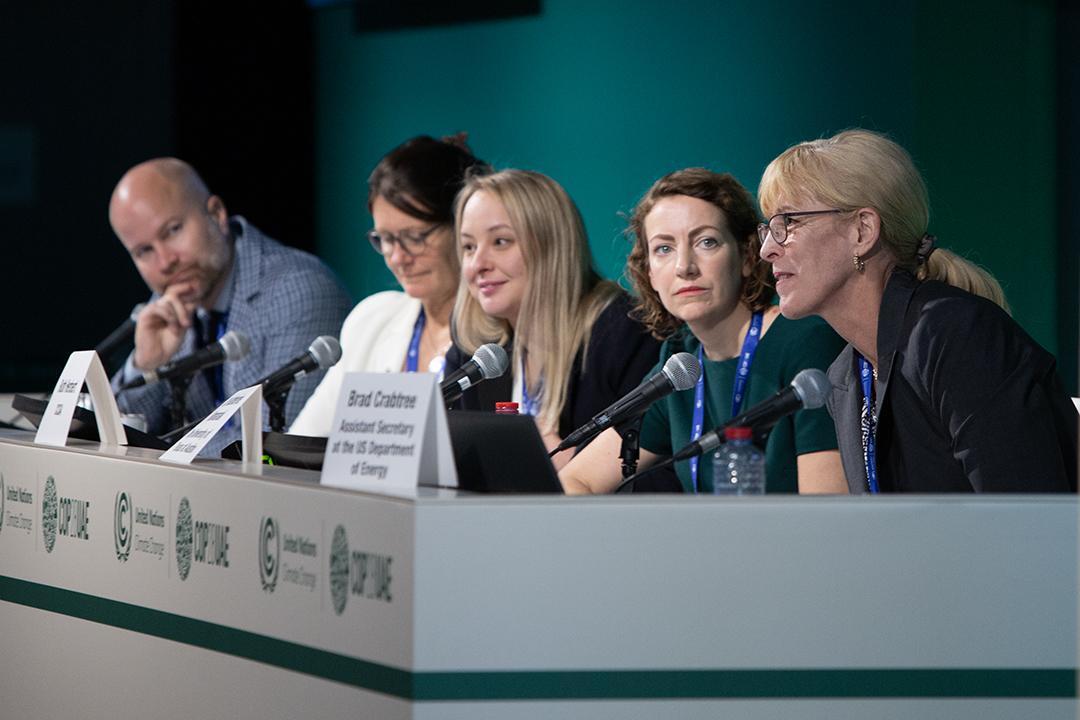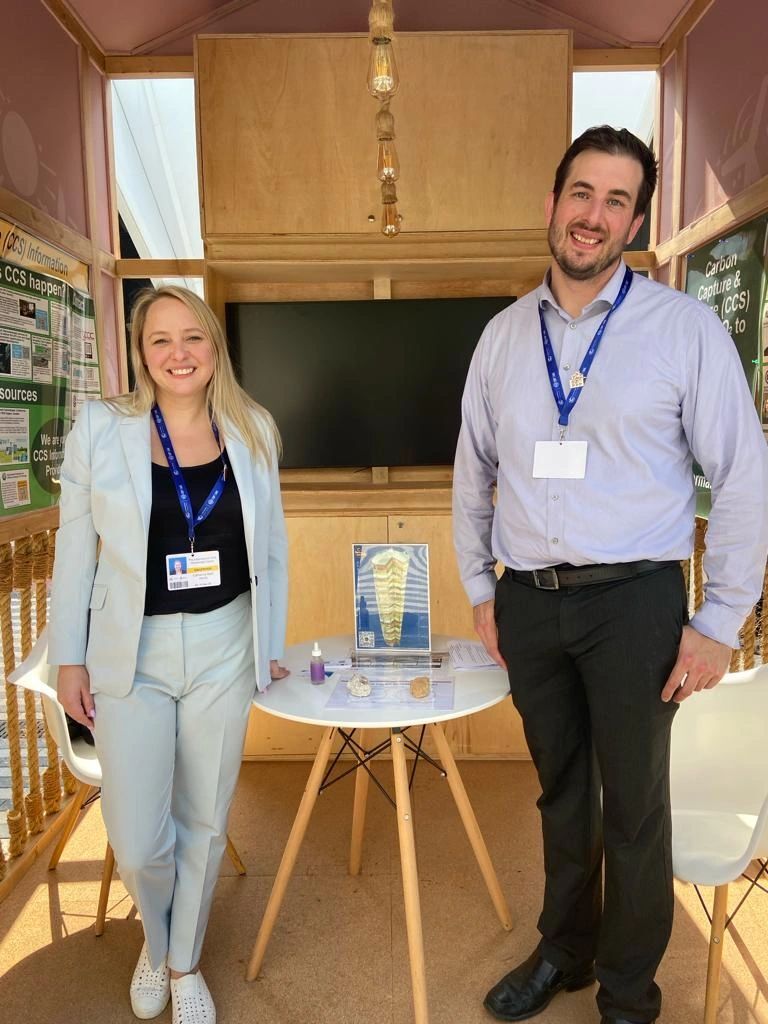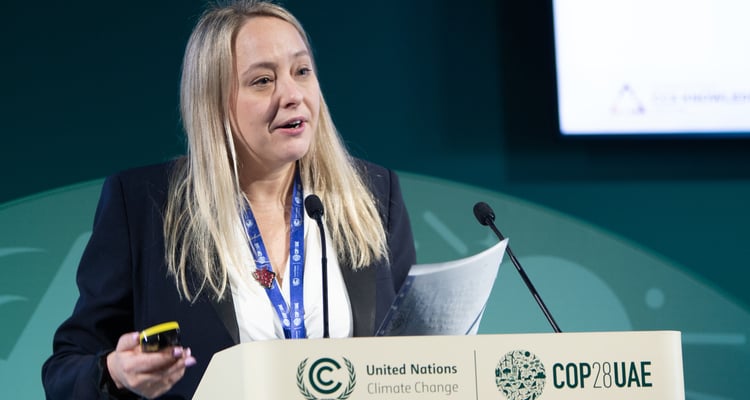It’s been a whirlwind few weeks with the wrap-up of COP28 and the release of the UAE Consensus, a new agreement for tackling climate change that for the first time explicitly includes carbon capture storage (CCS) as a necessary pillar for global greenhouse gas emissions reduction.
As I reflect on my experiences in Dubai – which included a chance for me to celebrate a milestone birthday! – I’m heartened by the progress being made to share knowledge and expand CCS technologies and opportunities globally. I’m also reminded that listening, openness, and collaboration with diverse partners will be more important than ever in this next stage of CCS growth.
One message I’m hearing from many is the fact that CCS is no longer a technology problem – now we need the right mechanisms, policies, and structures to enable broad adoption and deployment worldwide.
One sector where there’s significant momentum for CCS globally, and leadership underway right here in Canada, is cement manufacturing. As one of the largest heavy industries, and responsible for approximately eight per cent of global CO2 emissions, there’s tremendous opportunity for decarbonization in both developed and developing economies.
At the only UNFCCC-hosted side event on CCS at COP28, we joined a key conversation with global experts to discuss CCS and carbon capture, utilization and storage (CCUS) in the cement sector, where I shared details of Heidelberg Materials’ CCUS project in Edmonton as a pioneering example of the emissions reductions that are possible when we apply CCS technology to cement production processes. Heidelberg’s Edmonton facility will capture over one million tonnes of CO2 annually; with CCS technology being installed at cement manufacturing facilities around the globe the emission reductions impact can be significant.
Claude Lorea, innovation and ESG director with the Global Cement and Concrete Association, emphasized this in her comments on the panel, highlighting that CCUS adoption in the cement industry remains critical to achieving net zero emissions and needs to be scaled up from less than 1% to 90% by 2050.
I was also joined on this panel by Tim Dixon, general manager of the International Energy Agency Greenhouse Gas R&D Programme (IEAGHG), who reflected that legislation is a key area for increased CCS deployment, and that the Sixth Assessment Report of the Intergovernmental Panel on Climate Change builds a case for CCS deployment. It shows that across around 95 scenarios compatible with 1.5° Celsius of warming (and with limited temperature ‘overshoot’), a median average of 1.1 gigaton a year of carbon capture and storage needs to be deployed by 2030. He further drew attention to the IEA CCUS Handbook, which identifies priority issues that legal frameworks should address for CCUS deployment. He noted that CCS continues to fall short of the 2030 target.
Dr. Katherine Romanak, a renowned research scientist at the University of Texas at Austin, shared research to determine whether stored CO2 can leak and associated impacts if it does. CO2 stored underground becomes mineralized into rock over time. She underscored that CO2 has demonstrated proven storage for decades, and even though CO2 leakage is highly unlikely, simulated studies show that leakage in drinking water could lead to carbonation of the water—which is benign. This side event was recorded and is accessible on YouTube. There is also a great summary article from the International Institute for Sustainable Development (IISD) Earth Bulletin team that nicely captures the discussion.

The Carbon Management Challenge (CMC) is another opportunity for collaboration with diverse partners around the globe. World leaders – including co-sponsors Brazil, Canada, Indonesia, the United Kingdom and the United States – gathered to launch the CMC on December 5th, along with the European Commission and countries from six different continents.
The CMC is a call to action to accelerate the deployment of carbon capture, removal, use and storage technologies. It aims to create a pipeline of projects worldwide that by 2030 will manage at least a gigaton of carbon dioxide annually. As Fatih Birol, Executive director of the IEA highlighted: at least 10% of cumulative emission reductions must come from CCS to reach the 1.5° Celsius target, making it a critical technology.
The CMC will be a government-industry-NGO model with developing countries playing a key role. With the number of nations now involved over 20, significant progress has been made in a short time. We hope that the Knowledge Centre can play a significant role as a part of the CMC when it comes to sharing learnings and expertise.
The mechanisms, policies and structures for adoption was also a key theme in discussions with Canadian federal and provincial leaders at COP28, including federal Envionment and Climate Change Minister Steven Guilbeault, Alberta Premier Danielle Smith, Alberta Minister of Environment Rebecca Schultz, Saskatchewan Premier Scott Moe, and Newfoundland and Labrador’s Minister of Environment and Climate Change Bernard Davis.
I was incredibly honoured to host a discussion with Premier Smith, Premier Moe and Minister Davis, where the leaders outlined the vision for CCS in their provinces, and the enormous opportunities Canada has to build on its early leadership in large-scale CCS development in a decarbonizing world. I appreciated Premier Moe’s statement that creation of the Knowledge Centre to capture and share the experience of the world’s first CCS facility on a commercial power plant at SaskPower’s Boundary Dam power station has made us a global champion for CCS, with more than a decade of investment that has led to regulatory frameworks, innovation, knowledge and the skills needed to bring the next generation of projects to life.
A CCUS executive dinner co-hosted by the Knowledge Centre and Emissions Reduction Alberta connected Canadian industry leaders with ministers and the global CCS community, helping to illuminate how we can all play in the global ecosystem. It provided important context and reinforced the need to replicate successful CCS projects – like the ones we’ve developed in Canada – many times over if we’re going to bend the curve on global emissions. Central to this will be knowledge sharing, and how initiatives such as the CCS knowledge sharing hub we are developing will benefit national and global efforts to rapidly deploy CCS.

I also had the opportunity to host a panel with CRIN on Big Funds, Big Tech and the Carbon Management Revolution. This was a fantastic discussion with Kel Coulson, head of policy at Carbon Engineering, Claude Letourneau, CEO of Svante, Robert Niven, founder of CarbonCure Technologies, and Julio Friedmann, chief scientist at Carbon Direct, on finance, tech startups, and the carbon pricing and business models needed for growth. One of the outcomes was consensus that whatever structures are put in place need to provide certainty and consistency. Check out the recording for further details.
SaskPower’s investment in CCS and commitment to sharing lessons learned have reduced risks in CCS project development and are an example of global leadership in this area. Mac Walton, the Knowledge Centre’s senior policy analyst, had the opportunity to highlight this at the province of Saskatchewan’s pavilion. The province joined over 50 Saskatchewan-based organizations at COP28 to highlight Saskatchewan’s sustainability leadership.
As expected, the first global stocktake on progress towards achieving the Paris Agreement, which was presented at COP28, highlighted less than hoped for results. Among other things, it underscored the essential role carbon market mechanisms need to play to kickstart the roll-out of carbon removals necessary to achieve net zero. This underpins the need for Article 6 of the Paris Agreement which disappointingly did not get its full text past the finish line. Yet, the need to allow countries to voluntarily cooperate with each other to achieve emission reduction targets was something I saw in spades at COP28.
The spirit of cooperation I saw – including conversations on carbon accounting and knowledge sharing on how carbon capture can be reported – suggests we’ve only scratched the surface of what’s possible. Indeed, continued collaboration and partnership is the only way to assure long-term success for CCS adoption and ultimately emissions reduction globally.

